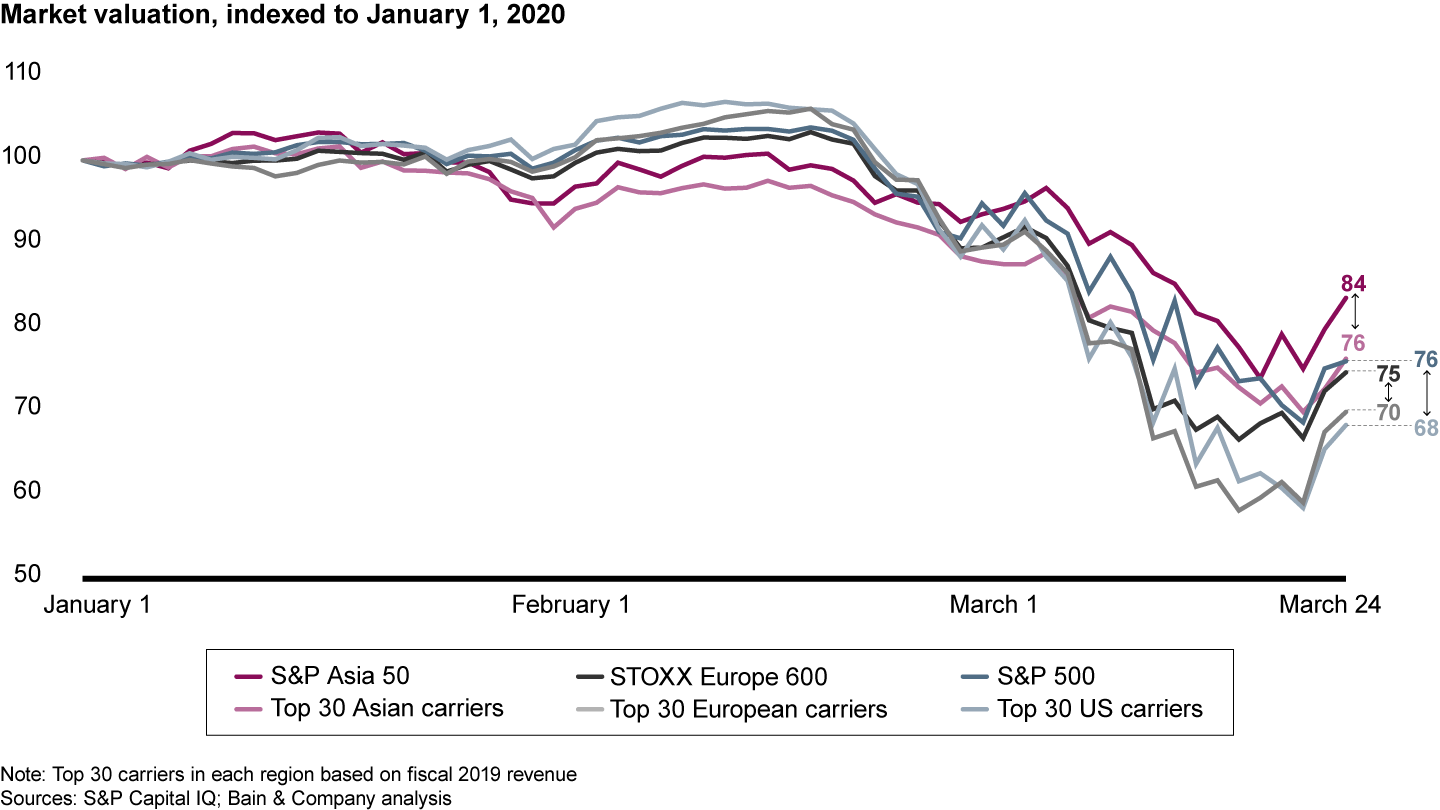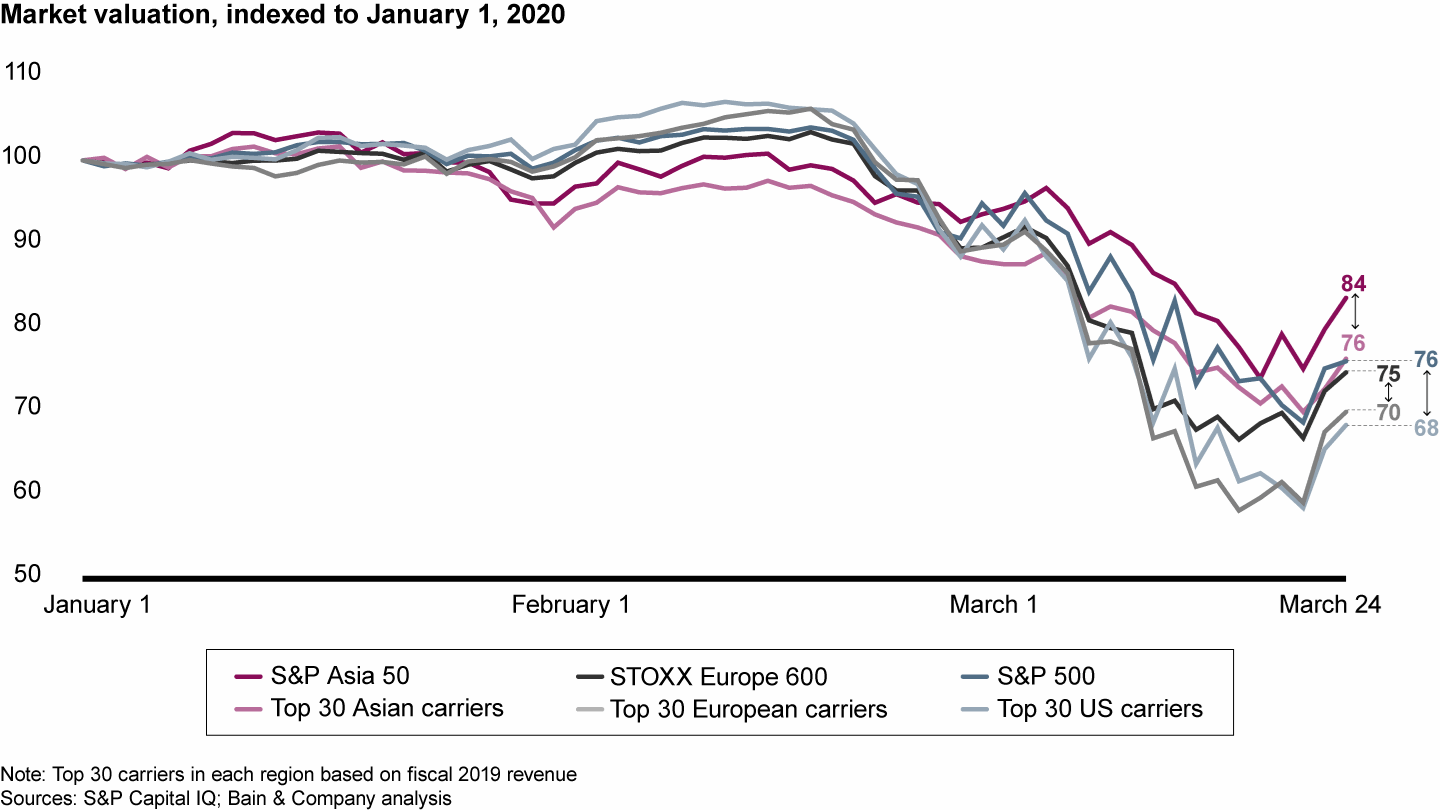Brief

Executive Summary
- Leading insurers have refashioned their operations to meet the coronavirus challenge, and their responses point the way for insurers worldwide.
- The leaders have acted quickly to protect their employees and agents, through stricter, targeted safety protocols.
- They have adjusted their IT investments, fortified the infrastructure for remote work and accelerated the digitalizing of many processes.
- Leading carriers also are going the extra mile for customers, with extended coverage, extra services, 24-hour hotlines and new medical indemnifications.
Consumers and business owners tend to think about insurance only sporadically. Suddenly, they have a number of insurance concerns since Covid-19 disrupted everyone’s work and home life, as well as their finances. Many people worry not only about their health, but also what their insurance will cover.
Will travel insurance reimburse canceled trips? Will health insurance cover tests and treatment for the coronavirus? Will business-interruption insurance kick in, and what does it cover? Will insurers’ capital remain adequate if capital markets continue to crash?

Macro Surveillance Platform
For more detail on the business implications of coronavirus from Bain’s Macro Trends Group, log on to the Macro Surveillance Platform. Learn more about the platform >
For insurers themselves, which often must improvise as they go, the pandemic has thrown operations into round-the-clock emergency planning and extensive work-at-home modes. Investors have pummeled their stocks (see Figure 1). For life insurers, lower bond yields could also mean hard times, because they invest customers’ premiums heavily in corporate bonds.


The scope of the challenge can seem overwhelming to insurance executives. Fortunately, our recent work with insurers, combined with observations of the industry worldwide, yields a useful short set of actions to guide executives in the weeks and months ahead. The approach should have two streams: act now to protect the business, and plan now for the trajectory beyond the immediate crisis.
Protect your people, including agents
- Engage with medical experts to understand the dynamics of the contagion and guide emergency protocols for employees and affiliated agencies. The protocols should have clear, simple rules, such as a maximum number of people gathered per office.
- Provide on-premises health screenings, and give employees items such as masks and hand sanitizer. Shut down public areas, including the cafeteria and gym.
- Map all activities to determine what must continue on company premises (such as certain core functions) and what should shift to home locations right away (certain employees, as long as they have the appropriate tools for remote work). Then, assess the feasibility of increasing the percentage of employees working from home by giving them necessary equipment. Adopt the same behavior with agents.
- Adapt the agent network for remote work by agreeing on objectives in order to avoid paralysis and to align with the company’s code of conduct. Cancel noncritical meetings and emphasize digital communication. Listen to agents’ concerns and feedback, adjusting as you go.
In Italy, for instance, Generali and other major carriers took most of these measures quickly.
Set up a business continuity plan
- Establish a senior crisis-management team with a lean decision-making process. They will need a detailed map of possible scenarios (an infected employee, employees exposed to an infected person, employees with symptoms). Each scenario should include a set of concrete steps (close an office immediately, alert all employees who traveled to a specific region).
- Define red/yellow/green countries or regions and rapid responses for each category.
- Closely monitor the supply chain, business trends and cash flow.
Adjust the operating model accordingly
- Pursue savings in selling, general and administrative (SG&A) and indirect procurement costs. Reprioritize IT investments, keeping strategic projects on track, but postponing projects that are not critical.
- Redefine essential business-to-business processes, clearly identifying what still needs to occur on paper (often to comply with national laws). Digitalize the rest.
- Define a small set of immediate, streamlined responses to claims.
- Check that IT systems can handle remote access with full security features.
- Scale up remote work through an Agile scrum team and central orchestrator.
- For remote workers, design a large-scale infrastructure that includes a network and communication platform for both laptops and smartphones.
- Offer employees incentives to obtain adequate home connectivity, preferably with fiber-optic cable.
- Activate all remote productivity tools, such as videoconferencing, document sharing and cocreation platforms.
- Set up a dedicated intranet site with key information and updates, including a Q&A hotline.
Go the extra mile for customers
Leading carriers in the most affected countries have stepped up to support customers in different ways, ranging from extended coverage to extra services. A structured approach might encompass a variety of offerings.
For retail customers, insurers can consider enlarging the scope of coverage by providing:
- Complimentary extension of health coverage for Covid-19 infection.
- Reimbursement of medical expenses for hospitalization or quarantine.
- Indemnification in case of Covid-19 diagnosis, quarantine, long-term consequences or surgery. In Hong Kong, some insurers granted indemnities for hospitalization to life and medical policyholders, while in India, a Go Digit General Insurance product allows indemnification for Covid-19 diagnosis or quarantine.
- Online platforms and apps to provide free information, such as health condition self-checks, epidemic Q&A, community resources and a 24-hour hotline to answer queries.
- Medical staff available at any hour to answer questions from health policy subscribers.
- A map of agencies that remain open, emergency numbers, how to get in touch with company agents and notices of any product changes underway.
- Information to customers and employees about the results of protocol enforcement.
Small and medium-sized enterprises may be concerned about their employees or the effects of a forced shutdown. Insurers can offer:
- Policies to protect employees who work in highly affected countries (death and disablement, cash allowance).
- Extensions of daily reimbursement if businesses are closed by government fiat.
- One-to-one communication with high-priority customers.
Some insurers, such as People’s Insurance Company of China, China Pacific and Ping An, have worked together to provide coronavirus-related products. These include indemnity for production losses, business interruption and salaries to quarantined employees.
For support agents, insurers can help alleviate economic hardship. For instance, in Italy Allianz has released €75 million to respond to agencies’ need for liquidity.
Plan now for a different future
Given the current state of uncertainty, it pays to devise an ongoing stress test in which you:
- Conduct a dynamic scenario analysis to address the less predictable aspects of the crisis.
- Accelerate the transition to digital tools, channels and operations to improve the experience for customers, employees and agents.
- Regularly assess your exposure to capital markets and the potential impact of sharp movements up or down. Accelerate and simplify decision making if you need to quickly adjust the investment strategy.
- Challenge current cost allocations. Consider shifting funds away from projects that may no longer have a high return (such as point-of-sale advertising and in-person events), in order to fuel a faster digital transformation.
This set of guidelines will help insurance executives weather the immediate crisis and fortify their organizations during the related economic downturn. Looking ahead, insurers also have a mandate to build a business model tuned to new customer behaviors and priorities.
For example, consumers will look for policies that clearly convey what is and is not covered. They will ask for convenient support through any channel and at any time, either to communicate with agents or perform basic tasks themselves. Insurers must be ready to change the role of physical distribution by offering simple and digital distribution. Employees now are open to new ways of working. That does not mean opening the pocketbook for any digital initiative. Rather, spending on digital should align closely with an insurer’s strategy.
Turbulent times often create big shifts in market share, so insurers that take select, concerted actions now may emerge even stronger when the economy starts to expand again.

Coronavirus
The global Covid-19 pandemic has extracted a terrible human toll and spurred sweeping changes in the world economy. Across industries, executives have begun reassessing their strategies and repositioning their companies to thrive now and in the world beyond coronavirus.
Andrew Schwedel, Marcello Pallotta and Henrik Naujoks are partners with Bain & Company’s Financial Services practice, and Henrik leads the practice in the Asia-Pacific region. They are based, respectively, in New York, Milan and Hong Kong.